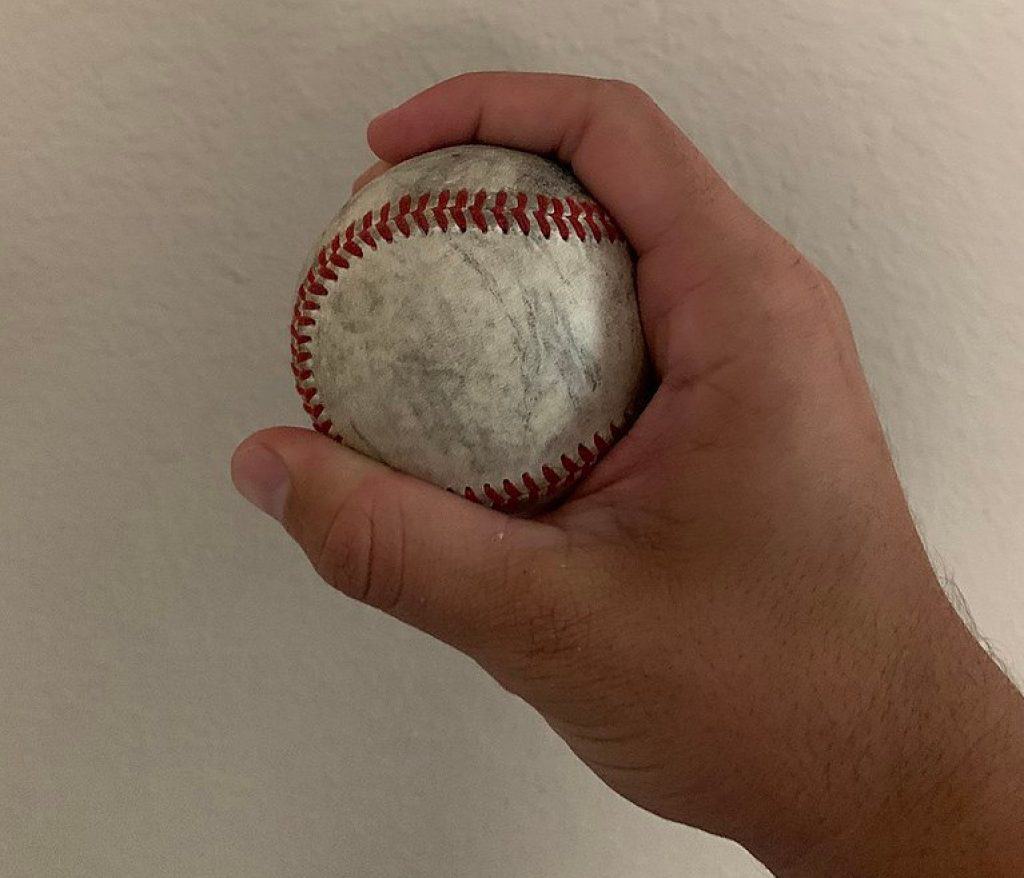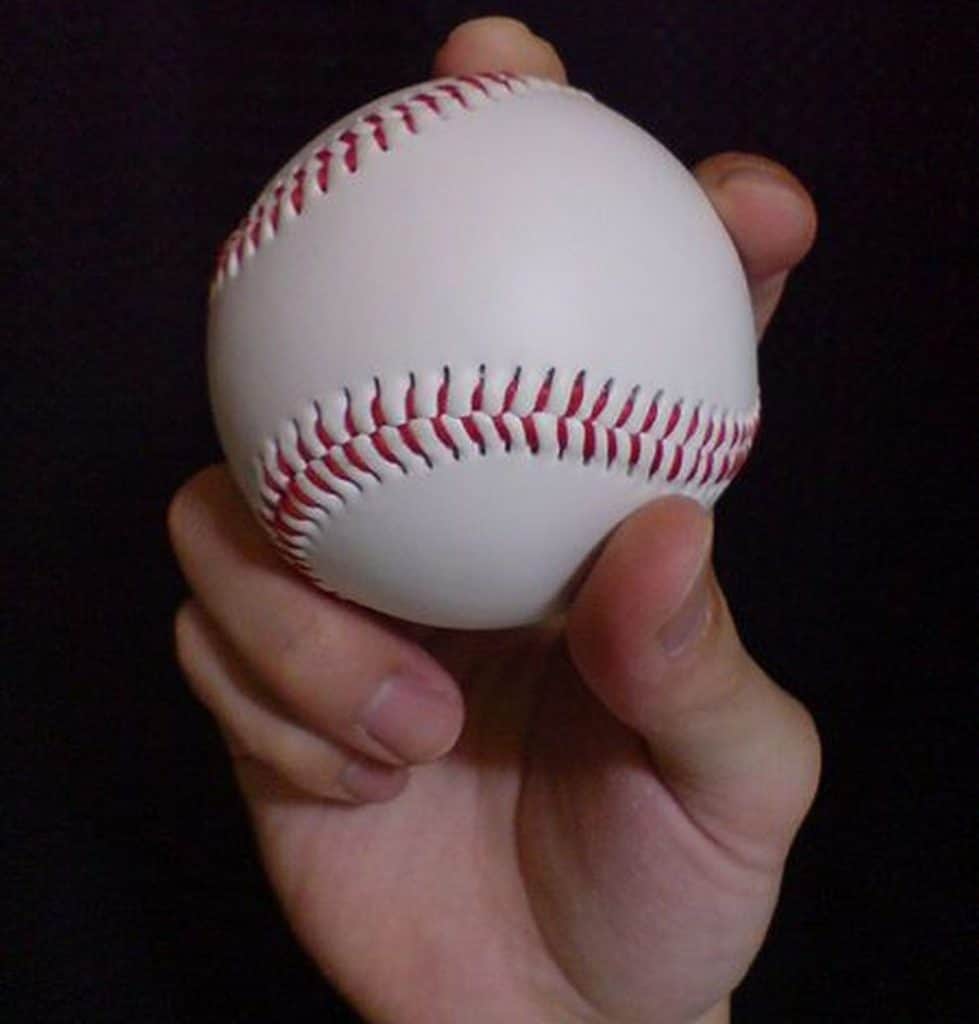Curveball vs Sinker – What’s The Difference?
The job of a pro pitcher is one of the hardest and most difficult to master in all of the sports.
On a daily basis, they go against the best batters in the world and are tasked with getting them out. And, this is far from easy.
To take the batter out, a pitcher needs to have a deep bag of various pitches, varying in both velocity and movement.
The best pitchers can throw the fastballs and slow balls, they can make it go left or right, swerve, dip down, or suddenly rise.
Baseball is a game of millimeters and milliseconds. If a batter hits a ball just a bit too soon or too late, or a tad too low or too high, he can say goodbye to a solid hit.
In this article, I’ll compare curveball vs sinker, two pitches that have been giving headaches to batters for years.
Table of Contents
What is a Curveball?

Curveball done right is as fun to watch as it is devastating for hitters.
It’s not the fastest throw in a pitcher’s bag but it performs a deep-diving action as it approaches the plate, catching the batter off balance.
It’s thrown with a sharp, downward release, resulting in a strong forward spin.
Due to this significant forward spin, the ball sharply breaks down as it comes to the home plate.
The more topspin a pitcher manages to put on the ball, the bigger the air pressure difference between the top and the bottom of the ball is.
Consequently, the greater this difference is, the greater the break will be.
As it leaves the pitcher’s hand, the curveball often seems like it will sail over the hitter’s head, only to drop at his knees.
Besides breaking downwards, the curveball can also break to the pitcher’s off-hand.
How to Throw a Curveball?

For starters, the grip of the curveball is similar to how you would hold the drinking glass.
The middle finger is on one of the long seams while the thumb is a bit behind the seam on the other side of the ball.
The index finger is next to the middle finger, while the remaining two fingers are folded towards the palm.
On the delivery, the pitcher snaps the arm and wrist in a downwards motion at the top of the throwing arc.
The ball loses contact with the thumb as it rolls over the index finger, receiving the forward spin.
As the ball flies, all four seams rotate in the same direction of the flight trajectory.
As I mentioned, the harder the pitcher snaps the ball, the more topspin it will have and the pitch will break more.
What is a Sinker?
The sinker is a pitch that, as its name says, sinks heavily as it approaches the hitter.
It’s a weapon often used by pitchers for inducing ground balls.
Besides, it’s a great whiff generator as it tricks the hitter into going for the ball he can’t hit.
Sinker is similar to a 2-seam fastball and is often viewed as the same thing, but it features less lateral movement and more vertical drop.
This pitch is a bit slower than a traditional fastball and drops 6 to 9 inches more.
This drop is a result of seams catching the air in a particular way causing the ball to sink.
As the sinker is a kind of fastball, it’s important to get a hard break on the pitch, making the ball fly faster, especially if it’s thrown straight across the home plates.
Slow sinker pitches are usually easy to hit on.
How to Throw a Sinker?

The technique of sinker pitches is pretty similar to throwing regular fastballs.
A pitcher should assume the same stance as with the fastballs.
The grip is a simple 2-seam grip with the index finger over the closest seam, middle finger next to it, and thumb on the bottom of the ball.
The ball should be gripped a bit tighter than usual until the point of release to create more friction and increase the ball’s air resistance which should cause it to sink.
This will also prevent your pitch from going wild.
At the point of release, the right-handed pitchers will twist their palms to the right and vice-versa.
Whether the ball will fly as a sinker or a traditional 2-seam fastball mostly depends on how much the pitcher turns or pronates his wrist at the release.
The ball should be aimed at the batter’s waist level.
Curveball vs Sinker – What are the Differences?
The main difference between curveballs and sinkers is in their trajectory as they fly to the home plate.
As their names say, curveballs curve, while the sinkers sink.
Curveball pitches start high and then break down or diagonally across the hitting zone, creating an arc or “curve”.
Eventually, they drop down as they near the home plate. They’re slower than fastballs, including the sinker, and utilize forward spin.
The sinkers, on the other hand, keep the straight path for most of their flight.
Only at the very end, in front of the home plate, they swiftly dip down. They’re like other fastballs thrown with backspin.
When it comes to the speed of the pitch, curveballs are slower than sinkers.
They’re known as “off-speed” pitches and the average MLB curveball flies at about 70 -80 mph.
Sinkers, like all fastballs, are hurled at high velocity.
Conclusion
Both curveballs and sinkers serve to trick the batter as the ball doesn’t have a straight path all the way to the catcher.
However, each of these pitches accomplishes this in a different way.
The way they veer off their path towards the hitter is the main difference between the two.
What is common for these two pitches is that they’re difficult to master and require a lot of practice.
Sinker is more often used between the two and is often the primary pitch for certain players.
The curveballs, on the other hand, are mostly complimentary weapons used when the pitcher is trying to disrupt the batter by giving him a different look or speed.
Still, both are powerful tricks in any pitcher’s arsenal and have been for more than a hundred years.




